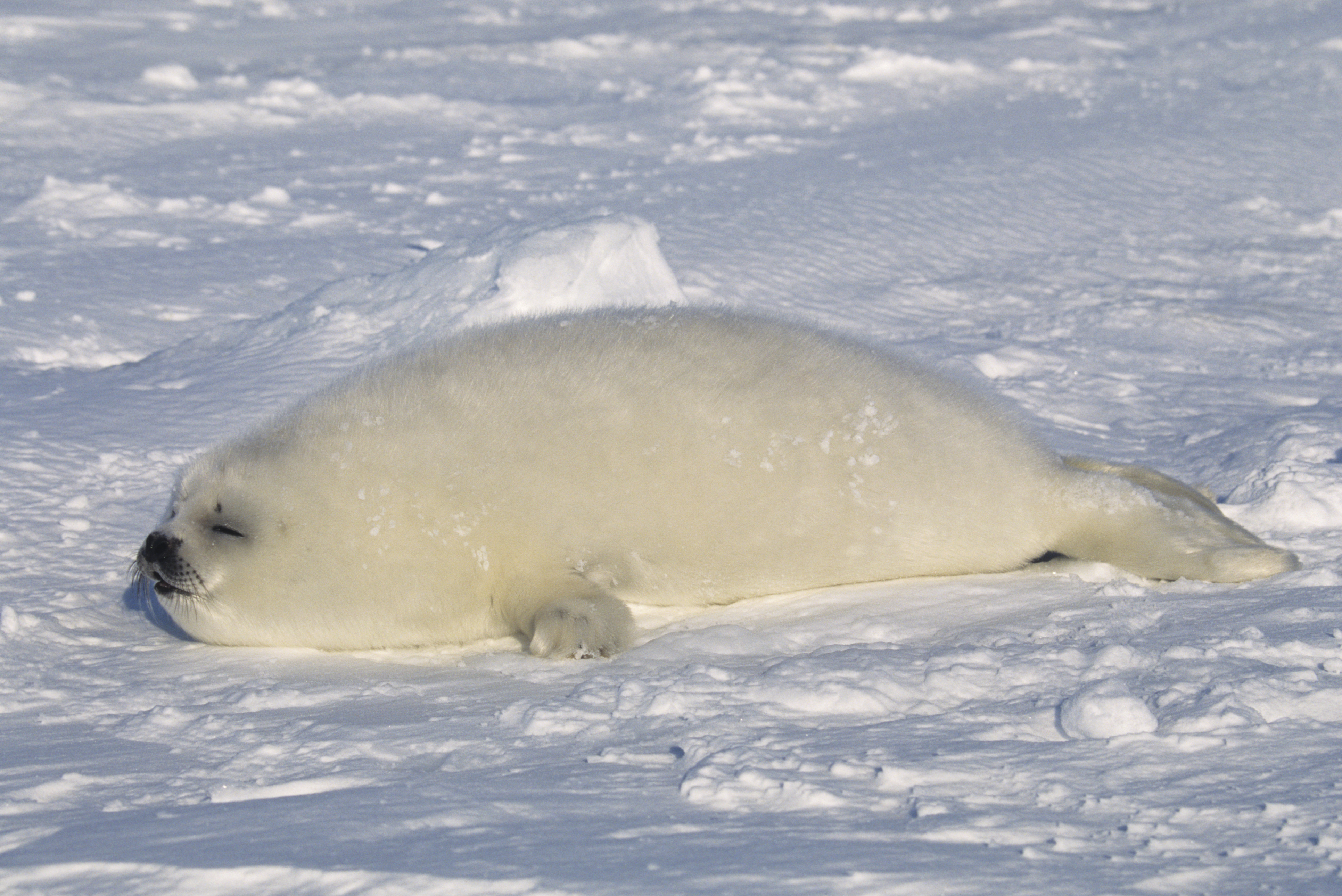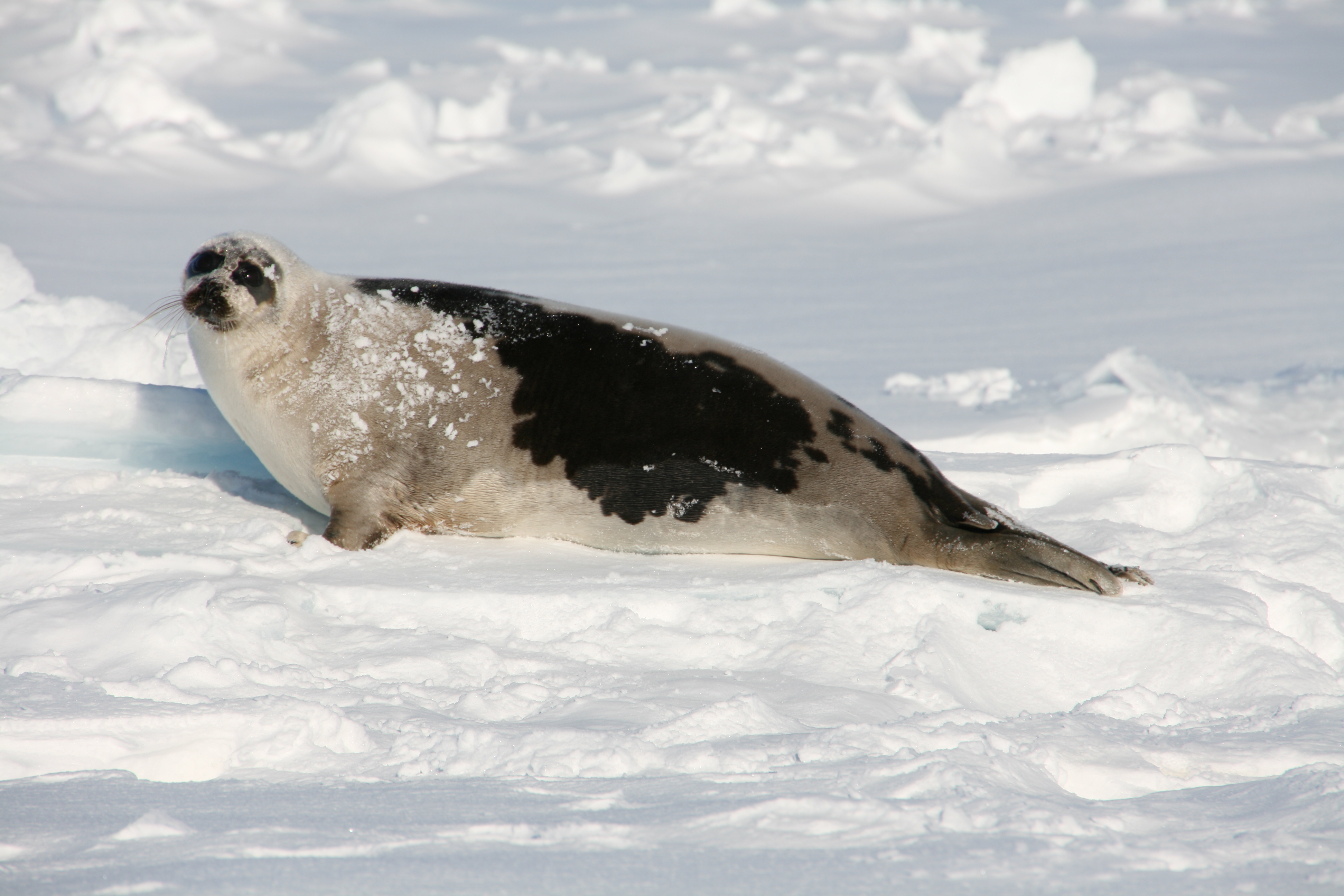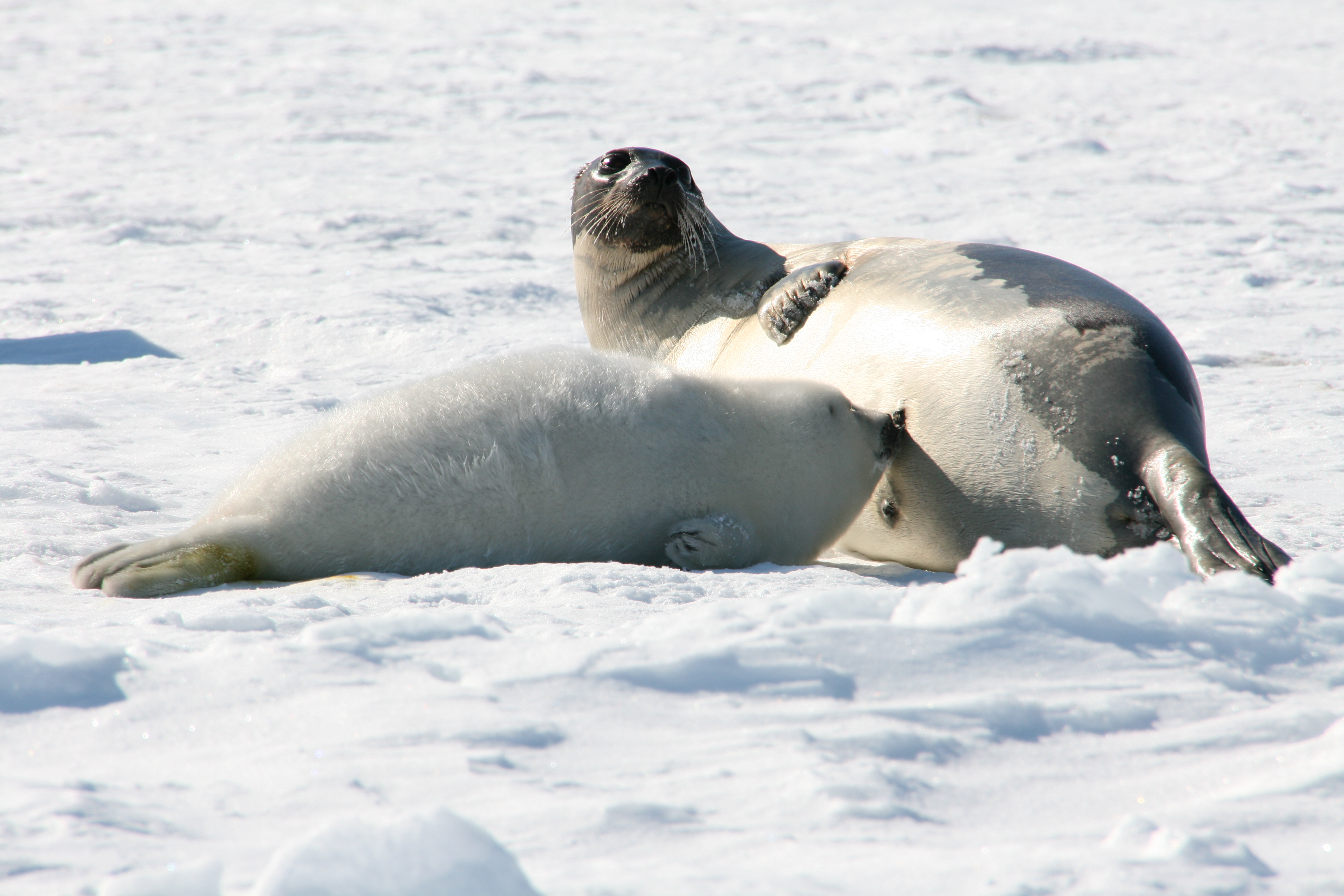Harp seal is a sea mammal best known for the snowy white coats of its pups. The newborn pup keeps this coat, called lanugo fur, for about 12 days and then molts (sheds). The replacement fur is grayish and spotted. Harp seals keep similar coloration until 8 or 9 years of age. Adults have a black saddle—or harp-shaped marking on their backs. Many adults also have a black face and head.

Harp seals are medium-sized seals. Adults reach up to 6 1/4 feet (1.9 meters) long and weigh 300 pounds (135 kilograms) at their heaviest. Their average weight during pupping (birthing and nursing pups) is 285 pounds (130 kilograms). Both males and females eat little or not at all during pupping and mating periods, or when they molt. During these times, they live off energy stored in their blubber, a layer of fat beneath the skin. Harp seals lose much weight during these times.
Harp seals live in the North Atlantic Ocean and nearby Arctic waters. Scientists divide harp seals into three populations, based upon the seals’ southerly pupping locations: (1) the White Sea in Russia, (2) the Greenland Sea north of Iceland, and (3) the northwest Atlantic in Canada. The northwest Atlantic population pups on sea ice off southern Labrador and in the Gulf of Saint Lawrence. 
Each year, harp seals undergo a long migration. They winter in more southern areas and summer in the Arctic. In late February to mid-March, the female gives birth on drifting sea ice. Females usually have a single pup, weighing about 25 pounds (11 kilograms). Pups are nursed for only 10 to 12 days. The mother’s milk is extremely rich in fat, enabling the pup to double in weight in that time. The young seal then lives off its blubber for several weeks until it starts to feed on its own.
Following weaning (the end of nursing), the female harp seal mates and begins to feed, replenishing the energy lost during nursing. All seals and a number of other mammals have a rare breeding feature known as delayed implantation. In delayed implantation, also called embryonic diapause, the development of a fertilized embryo (developing young) is slowed at an early stage. The harp seal may delay development of the embryo for almost four months. The delay may help to ensure that pupping occurs when there is plentiful sea ice and food. Scientists also believe this delay occurs to allow mating to happen at a time when females are concentrated for pupping. 
The diet of harp seals varies. In some areas, they have been found to eat over 100 different kinds of prey. Most of their food consists of such small fish as capelin and Arctic cod. They also eat invertebrates (animals without backbones), including shrimp and other small crustaceans (shellfish). Harp seals usually dive to depths of up to 160 feet (50 meters) to feed, but they have been observed diving as deep as 2,300 feet (700 meters) and staying underwater for almost 30 minutes.
The main predator of harp seals is the polar bear. Greenland sharks and killer whales are also known to eat harp seals. People hunt harp seals in many places. Commercial hunting once drastically reduced harp seal numbers, but strict regulations on hunting have led to a recovery.
One of the greatest dangers to harp seals is climate change. Human activities are contributing to rising ocean temperatures in the Arctic and elsewhere, causing sea ice to break up and melt earlier in the year (see Global warming). Harp seals need ice for pupping. If the ice breaks up before the pups are able to swim on their own, the young seals can drown. Harp seals can live longer than 30 years in the wild.
